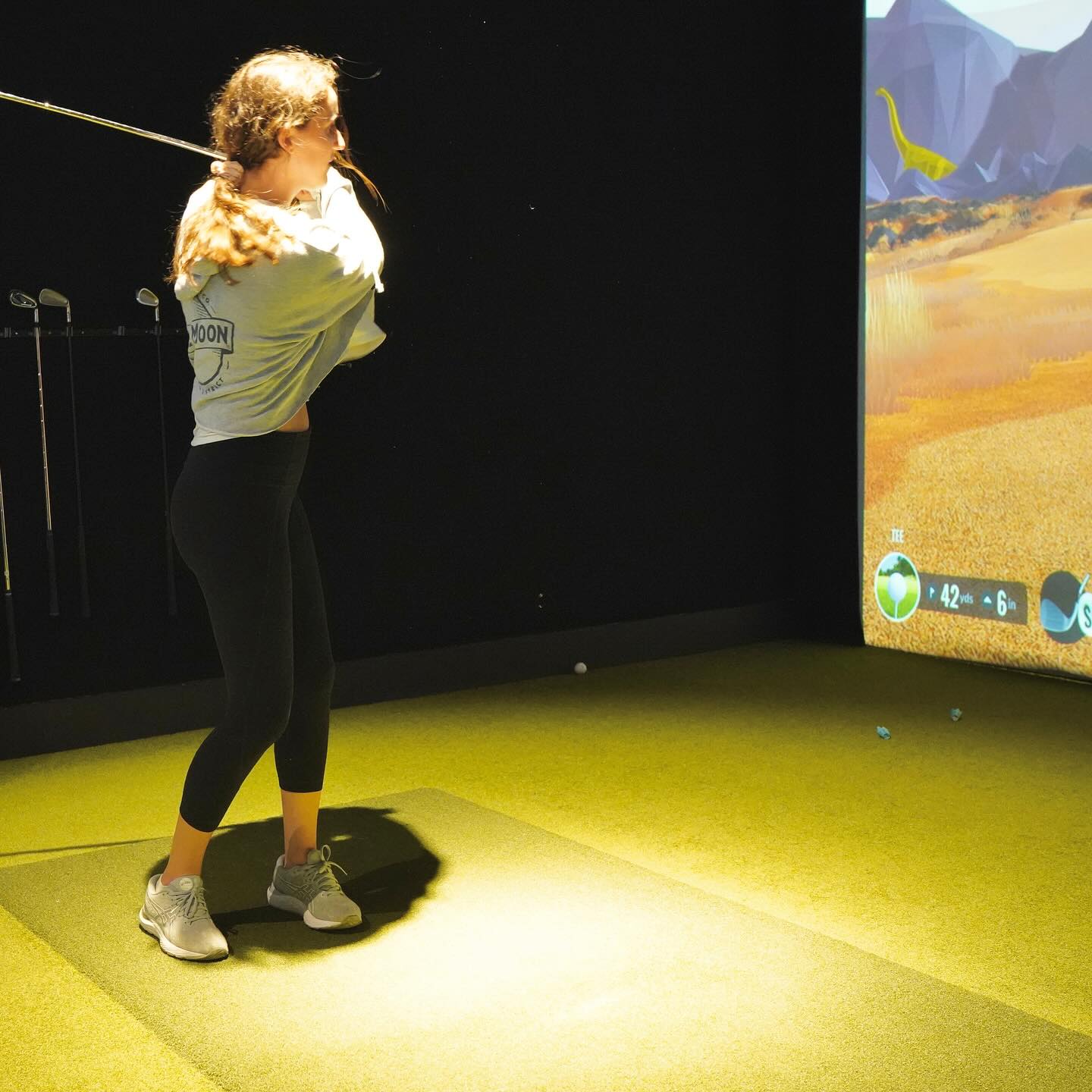
Swing Analysis Data
One of the biggest advantages of playing indoor golf is the swing analysis data provided by our Trackman simulators. Whether you are wanting to learn how to stop slicing a driver or strike the ball better with your irons and wedges, spending concentrated, quality golf practice time on our simulators can help significantly.
Monitoring Stats
Many golfers who are new to simulators, will automatically begin by only monitoring stats like carry and total distance, ball and club head speed, and spin rates. Yes, those are important and fun stats, but they are not the most important stats. We will help you understand the data you should be focusing on, how it affects your game and where those numbers should be.
Top Three Swing Data Points
Granted, looking at all the numbers during virtual golf can be a bit overwhelming, not to mention time consuming. Especially if you don’t know what numbers to worry about in the first place. We will help you understand the data you should be focusing on, how it affects your game and where those numbers should be. To follow, are the top three swing data points that we think most golfers should be concerned about. They are club path, club face to path and the angle of attack. If any of these are off, it affects the other two, diminishing your contact and your ball flight will be off accordingly.
Club Path
This is the direction the club head is moving as it makes contact with the ball and determines the type of flight path your ball will take. In general terms, a positive number means a draw shape, and a negative number means a fade shape, 0 means a straight shot. The higher the number is, the more shape you will get. Club path is the number to look at if you want to shape the ball flight (horizontal).
If the path is moving to the right, or inside-out (right handed golfer), you are more prone to have a closed face that usually produces a draw/hook base from the spin it puts on the ball. If your swing path is moving to the left or outside in, the club head is more than likely open and the golf ball will fade or slice from the spin. As a rule of thumb, good golfers will have a club path within 2 degrees, in either direction, of their target.
Club Face to Path
Next is your club face in relation to your club path. This is simply the angle of the club head in relation to the club path as the ball is struck. If your club path and face to path number are exactly 0 degrees, your ball should go perfectly straight. A 0 degree club path, but with the club face slightly open (positive number on display), sends your ball to the right. Accordingly, if your club’s face to path is closed (negative number), the ball flight will go to the left.
If your face to path is exactly 0 degrees, your club head will determine the path. An inside-out club path to the right will push the ball to the right, but an outside-in club path to the left will send the ball left. Again, being within 2 degrees in either direction of 0 is a good goal to shoot for with your face to path numbers.
Angle of Attack
This is which way the club is moving vertically as the ball is struck. Ideally, you want to make a divot after you hit the ball. This results from a negative angle of attack, meaning that you struck the ball as the club head was still moving down, which is what you want. Likewise, when your angle of attack is positive, your club head is moving upward as it contacts the ball. This type of contact angle is less effective because you hit the turf first and lose speed before hitting the ball.
Your angle of attack can affect club path, which then affects your club face compared to the club path, all three of these data points need to be clicking together. Most golfers fail to realize how important it is to make sure you’re hitting down on the ball correctly. This helps you to not only make solid contact, but also to control your ball flight direction.
Tips to Encourage Hitting Down on the Ball
Try moving the ball back in your stance and keeping your hands out in front of you more, while putting more weight forward on your front foot during impact with the ball. What you’ll be looking for is a slightly left club path which helps you hit down on the ball, with a face-to-path number close to 0 degrees (slightly closed.) Keep in mind that your wedges have more downward angle of attack than your longer clubs. The longer the club, the less downward you’ll be able to impact the ball.
Don’t Forget to Have Fun
Golf is after all, about enjoying the game and having fun. As you probably know, golf can also be frustrating and hard at times. So, if the numbers begin to get a bit overwhelming, just ignore the data on the screen! Focus on the shot in front of you and enjoy yourself! There’s plenty of time to work on your swing during golf practice. Just keep repeating good golf swing mechanics and before you know it, you will be a more consistent golfer!
